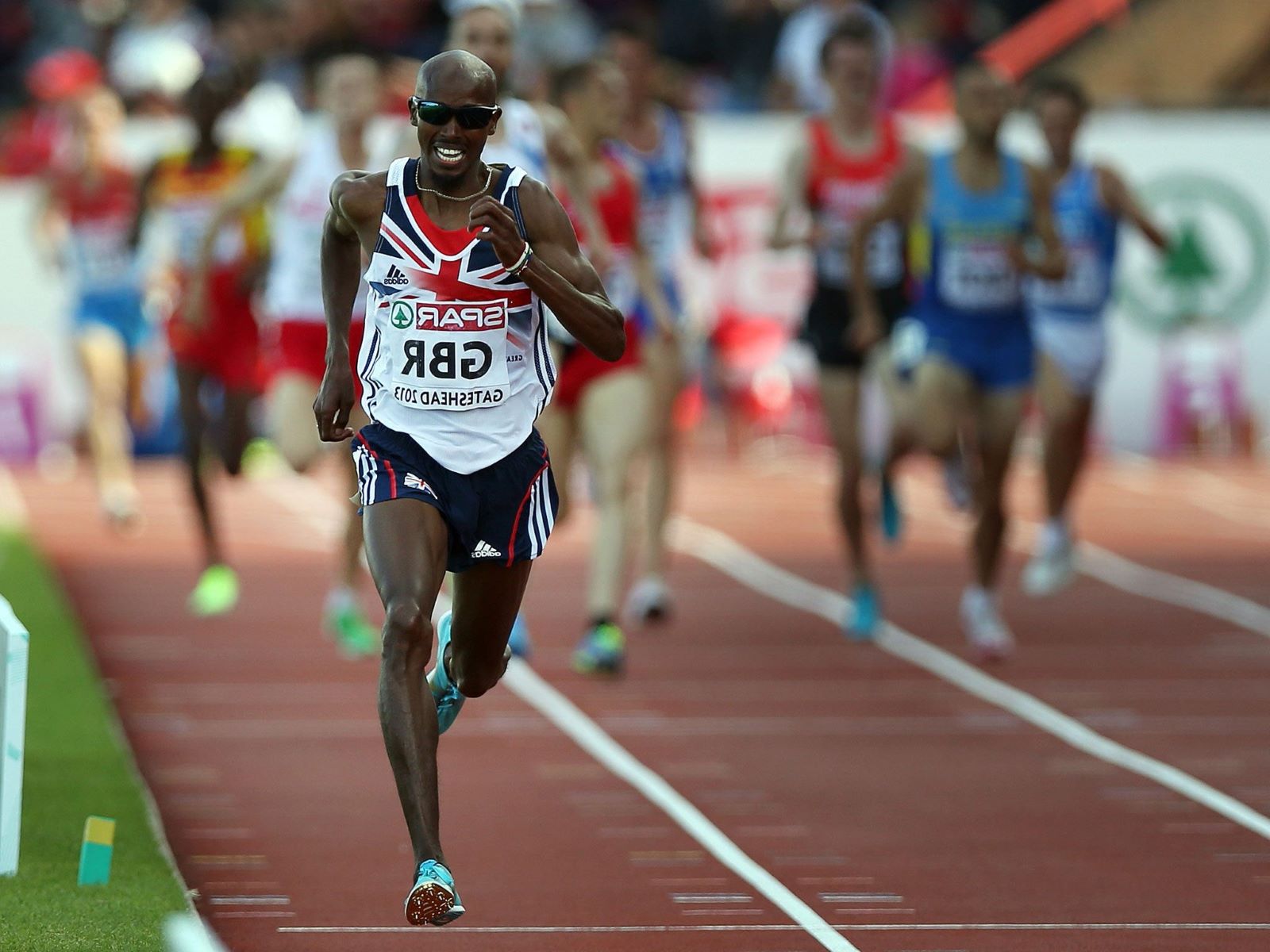Home>Health & Nutrition>Running On An Empty Stomach: The Truth About Fasted Cardio And Depleted Carbs


Health & Nutrition
Running On An Empty Stomach: The Truth About Fasted Cardio And Depleted Carbs
Published: February 21, 2024
Discover the impact of fasted cardio and depleted carbs on your health and nutrition. Uncover the truth about running on an empty stomach for optimal results.
(Many of the links in this article redirect to a specific reviewed product. Your purchase of these products through affiliate links helps to generate commission for Therunningadvisor.com, at no extra cost. Learn more)
Table of Contents
The benefits of fasted cardio
Fasted cardio, also known as exercising on an empty stomach, has gained popularity in the fitness world for its potential benefits. When you engage in cardiovascular exercise, such as running or cycling, before consuming any food, your body taps into its fat stores for energy. This process, known as lipolysis, can lead to several advantages for individuals looking to optimize their workouts and achieve their fitness goals.
-
Enhanced fat burning: Exercising in a fasted state can increase the utilization of stored fat as a primary energy source. When your body's glycogen stores are depleted, it turns to fat for fuel, potentially leading to greater fat burning during the workout.
-
Improved insulin sensitivity: Fasted cardio may help enhance insulin sensitivity, which is beneficial for overall metabolic health. When insulin sensitivity is improved, the body's cells become more efficient at using glucose, leading to better blood sugar control and potentially reducing the risk of type 2 diabetes.
-
Optimized training adaptations: Some research suggests that fasted cardio may enhance the body's ability to adapt to endurance training. This can lead to improved aerobic capacity and overall performance during endurance activities.
-
Elevated growth hormone levels: Exercising in a fasted state may lead to increased secretion of growth hormone, which plays a role in fat metabolism and muscle growth. Higher levels of growth hormone can potentially support muscle preservation and fat utilization.
-
Appetite regulation: Engaging in fasted cardio may help some individuals better regulate their appetite throughout the day. Some people find that exercising on an empty stomach can lead to reduced feelings of hunger and improved satiety, which may support overall calorie control.
It's important to note that the benefits of fasted cardio can vary among individuals, and factors such as overall diet, training intensity, and individual metabolic differences can influence the outcomes. While fasted cardio can offer potential advantages, it's essential to listen to your body and consider your individual needs and preferences when incorporating this approach into your fitness routine.
Read more: Running For Fast Abs
Understanding the science behind depleted carbs
Depleted carbs, often associated with the concept of fasted cardio, involve exercising when the body's glycogen stores are low. Glycogen, the stored form of glucose primarily found in the liver and muscles, serves as a crucial energy source during physical activity. When these glycogen stores are depleted, the body must rely on alternative fuel sources to sustain exercise, leading to a shift in metabolic processes.
During periods of low carbohydrate availability, the body adapts by increasing the utilization of fat for energy production. This metabolic shift occurs due to reduced insulin levels, which typically inhibit the breakdown of fat stores. With depleted glycogen, insulin levels decrease, allowing for an increase in lipolysis, the breakdown of fat into fatty acids and glycerol. These fatty acids are then utilized by the muscles as a source of energy, a process known as beta-oxidation.
Additionally, depleted carbohydrate stores can lead to an increase in the production of ketone bodies. Ketones are produced from the breakdown of fatty acids in the liver and serve as an alternative fuel source for the brain and muscles during periods of low carbohydrate availability. This adaptation is particularly relevant in endurance activities, where prolonged exercise can lead to significant depletion of glycogen stores.
Understanding the science behind depleted carbs also involves recognizing the interplay between carbohydrate and fat metabolism. When glycogen stores are low, the body prioritizes fat utilization to sustain energy production. This shift can have implications for individuals aiming to optimize fat burning during their workouts, making depleted carbs a strategy of interest for those seeking to enhance their body composition.
It's important to note that the body's response to depleted carbs can vary among individuals and is influenced by factors such as training status, diet composition, and overall metabolic flexibility. While some individuals may effectively utilize fat as a primary fuel source during depleted carb conditions, others may experience challenges in sustaining high-intensity exercise without sufficient carbohydrate availability.
Incorporating the understanding of depleted carbs into fitness strategies requires a balanced approach, considering individual goals, training intensity, and overall dietary patterns. By recognizing the metabolic adaptations associated with depleted carbs, individuals can make informed decisions regarding the timing and composition of their workouts to optimize performance and achieve their fitness objectives.
Tips for maximizing the effectiveness of fasted cardio
-
Stay Hydrated: Prioritize hydration before and during your fasted cardio sessions. Even though you may not be consuming food, maintaining proper hydration levels is crucial for supporting overall performance and minimizing the risk of dehydration.
-
Start Slow: If you're new to fasted cardio, ease into it gradually. Begin with shorter sessions and moderate intensities to allow your body to adapt to exercising in a fasted state. As your comfort and confidence grow, you can gradually increase the duration and intensity of your workouts.
-
Monitor Your Energy Levels: Pay attention to how your body responds to fasted cardio. If you experience excessive fatigue, dizziness, or lightheadedness, it may be a sign that your body requires some fuel before exercising. Listen to your body's cues and adjust your approach accordingly.
-
Incorporate Low-Intensity Activities: Consider including low-intensity exercises such as walking or gentle yoga during your fasted state. These activities can help ease your body into the fasted state and promote fat utilization without placing excessive stress on your system.
-
Focus on Recovery: After completing your fasted cardio, prioritize post-workout nutrition to support recovery. Consuming a balanced meal or snack containing protein and carbohydrates can help replenish glycogen stores and support muscle repair and growth.
-
Experiment with Timing: Explore different times of the day for your fasted cardio sessions to determine when you feel most comfortable and energized. Some individuals may prefer morning workouts, while others may find that later in the day works better for them.
-
Listen to Your Body: Ultimately, the key to maximizing the effectiveness of fasted cardio is to listen to your body. Pay attention to how you feel during and after your workouts, and be open to adjusting your approach based on your individual responses and needs.
By implementing these tips, individuals can optimize the potential benefits of fasted cardio while minimizing the likelihood of negative outcomes. It's important to approach fasted cardio with mindfulness and a focus on overall well-being, ensuring that the chosen approach aligns with individual preferences and goals.
Potential risks and drawbacks of exercising on an empty stomach
While fasted cardio and exercising on an empty stomach offer potential benefits, it's essential to consider the potential risks and drawbacks associated with this approach. Understanding the limitations and potential challenges can help individuals make informed decisions about incorporating fasted cardio into their fitness routines.
-
Decreased Exercise Performance: Exercising in a fasted state may lead to reduced exercise performance for some individuals. Without readily available glycogen stores, the body may struggle to maintain high-intensity efforts, leading to decreased endurance and overall performance during workouts. This can be particularly relevant for activities that require bursts of energy or sustained power output.
-
Potential Muscle Loss: In some cases, fasted cardio may contribute to muscle catabolism, especially if the body shifts to utilizing protein as an energy source. This can be counterproductive for individuals aiming to preserve or build lean muscle mass. While the body primarily relies on fat stores for energy during fasted exercise, prolonged sessions or inadequate protein intake could potentially lead to muscle breakdown.
-
Increased Risk of Muscle Fatigue: Exercising on an empty stomach may elevate the risk of muscle fatigue and early onset of exhaustion. Without sufficient glycogen stores, the muscles may struggle to maintain optimal function, leading to premature fatigue and reduced exercise capacity. This can impact the overall quality of the workout and hinder training progress.
-
Potential for Impaired Recovery: Post-exercise recovery may be compromised when fasted cardio is performed regularly. Without adequate post-workout nutrition, including essential nutrients and energy substrates, the body's ability to recover and adapt to the exercise stimulus may be hindered. This can impact muscle repair, glycogen replenishment, and overall recovery from training sessions.
-
Increased Risk of Hypoglycemia: Exercising on an empty stomach can potentially lead to hypoglycemia, especially for individuals with underlying blood sugar regulation issues. Low blood sugar levels can result in symptoms such as dizziness, lightheadedness, and weakness, posing safety concerns during physical activity.
-
Potential Impact on Mood and Focus: Some individuals may experience mood disturbances or reduced mental focus when exercising in a fasted state. The absence of readily available energy sources can impact cognitive function and overall mood, potentially leading to a less enjoyable and effective workout experience.
-
Individual Variability: It's important to recognize that the response to fasted cardio can vary widely among individuals. Factors such as metabolic differences, training status, and overall dietary habits can influence how the body adapts to exercising on an empty stomach. What works well for one person may not yield the same benefits for another.
By acknowledging these potential risks and drawbacks, individuals can approach fasted cardio with a balanced perspective, considering their unique physiological responses and fitness goals. It's crucial to prioritize overall well-being and performance while evaluating the suitability of exercising on an empty stomach within the context of individual needs and preferences.
















